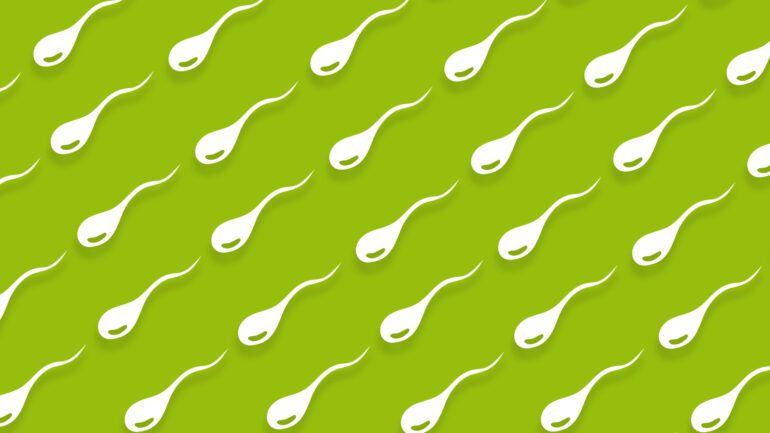TL;DR:
- Artificial intelligence (AI) tool can identify sperm in infertile men 1,000 times faster than human embryologists.
- The new AI algorithm offers hope to severely infertile men by increasing their chances of fathering biological children.
- The current manual process by embryologists is time-consuming and laborious.
- AI tool, called SpermSearch, can quickly and accurately locate viable sperm in samples, reducing stress on sperm and improving laboratory efficiency.
- SpermSearch outperforms human clinicians in identifying sperm and has the potential to enhance success rates in fertility treatments.
- The study was conducted using healthy sperm and testicular tissue samples from men with non-obstructive azoospermia (NOA).
- AI technology holds immense promise but requires further validation through clinical trials.
Main AI News:
Cutting-edge artificial intelligence (AI) has emerged as a game-changer in the field of fertility treatment, offering new hope to severely infertile men. Traditional methods of identifying viable sperm in samples taken from patients are laborious and time-consuming, relying on the meticulous work of embryologists. However, a groundbreaking AI tool now has the potential to revolutionize this process by identifying sperm in a matter of seconds.
Lead author Dale Goss, from the esteemed University of Technology Sydney, emphasizes the transformative impact of this AI algorithm on individuals with limited chances of conceiving biological offspring. Goss affirms, “This tool has the ability to give patients who have very little chance of fathering their own biological children an increased chance.” By replacing outdated and antiquated approaches that have remained unchanged for decades, this algorithm ensures swift identification of sperm in samples, enhancing the prospects of successful conception while reducing stress on sperm and increasing laboratory efficiency.
Typically, the most severe form of male infertility, non-obstructive azoospermia (NOA), affects around 1% of men. For couples seeking fertility treatment, this condition poses significant challenges, impacting approximately 5% of them. Although men with NOA may have minuscule quantities of sperm in their testes, the current procedure involves the removal of a testicular tissue sample. Embryologists painstakingly examine this sample, manually identifying and extracting viable sperm for subsequent Intracytoplasmic Sperm Injection (ICSI) treatment of their partner’s eggs.
Unfortunately, this process is time-intensive, often taking up to six hours to locate and isolate sperm within human tissue. Prolonged durations can hinder embryologists’ ability to accurately identify sperm due to mental and physical fatigue. Technicians meticulously shred tissue samples, releasing any sperm into a liquid medium within a petri dish. Utilizing a microscope, they meticulously search through the liquid, scrutinizing tiny portions at a time in search of sperm.
Contamination can impede progress, and the likelihood of parenthood diminishes if sperm is missed during the search. The longer the process takes, the greater the risk of encountering non-viable sperm. However, a recent study conducted by Australian experts showcases the immense potential of the AI tool called SpermSearch, which expedites this intricate process, saving clinicians from the arduous and time-consuming endeavor.
SpermSearch swiftly and accurately determines the presence and viability of sperm, enabling clinicians to make informed decisions regarding ICSI treatment. In fact, the study demonstrates that the algorithm outperforms experienced clinicians in identifying sperm, underscoring its superiority. To train SpermSearch, researchers exposed the AI to thousands of microscope photographs displaying sperm alongside various cellular debris, with the sperm specifically highlighted. Through image analysis, the AI successfully learned to discern the unique characteristics of sperm.
Goss and his team conducted experiments using healthy sperm, as well as samples of testicular tissue obtained from seven patients diagnosed with NOA, aged between 36 and 55 years. The algorithm’s performance was then compared to that of an embryologist with a presumed precision rate of 100%. Astonishingly, the AI identified sperm in less than a thousandth of the time required by the human clinician. Furthermore, SpermSearch detected a higher number of sperm, 611 in contrast to the embryologist’s 560.
These groundbreaking findings were presented at the prestigious annual meeting of the European Society of Human Reproduction and Embryology in Copenhagen, Denmark, on June 27. The study’s authors acknowledge that it represents a proof-of-concept test and stress the necessity of conducting a clinical trial to further validate the AI technology’s effectiveness.
Conclusion:
The development of an AI tool that can rapidly and accurately identify sperm in infertile men signifies a significant breakthrough in the field of fertility treatment. This groundbreaking technology has the potential to revolutionize the market by improving success rates and efficiency in the laboratory. The use of AI algorithms, such as SpermSearch, not only increases the chances for severely infertile men to conceive biological children but also reduces the mental and physical fatigue experienced by embryologists. As this technology undergoes further validation and clinical trials, it holds the potential to transform the lives of countless individuals and couples struggling with infertility, providing them with renewed hope and possibilities for parenthood.

